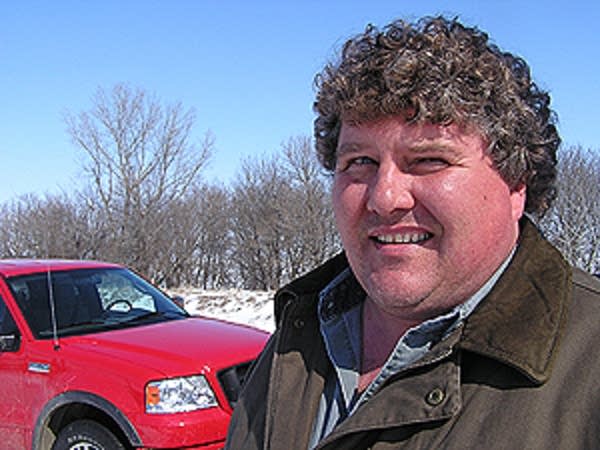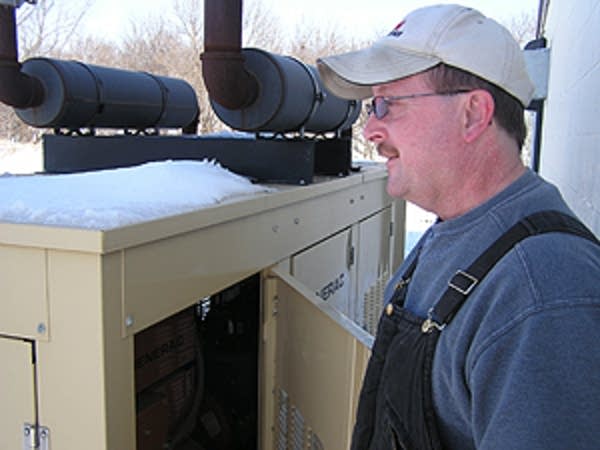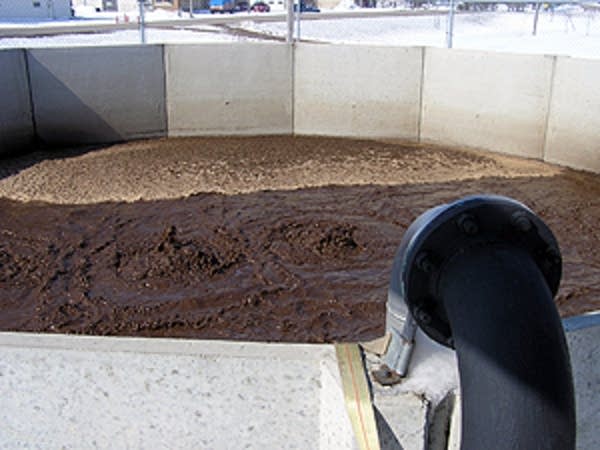Failed sewer plants cost state millions

It's a typical day in the town of Dunnell. Once again, there's a problem at the wastewater plant. Mayor Dan Nelson hurries to the scene in his red pickup truck. On the way he consults by radio with the wastewater supervisor.
"Are you coming out to the plant then?" says Nelson.
"Ten-four! If it's in the back room there, there'll be an alarm going off in there. It might be high water," is the response.

At the plant a high pitched alarm sounds. This time it's a minor problem in the backup batteries. But it's symbolic of the difficulties the sewage system causes for the town. Keeping it going is expensive for this community of just under 200 people near the Iowa border. Sitting down in the wastewater plant office, Mayor Nelson is surrounded by the whine of machinery. The industrial drone numbs the ears. It goes beyond that for Nelson. It also grates on his mental well being. It's a constant reminder of a failed project.
Create a More Connected Minnesota
MPR News is your trusted resource for the news you need. With your support, MPR News brings accessible, courageous journalism and authentic conversation to everyone - free of paywalls and barriers. Your gift makes a difference.
"We can't wait to get rid of it," laughs Nelson. "It's been just an ongoing headache, nightmare."
Nelson says the town was told the sewage plant would practically run itself. The reality is it needs daily attention. That's a big expense in a town with one fulltime employee. Meet Alan Helmers, a man with many titles.
"I'm police chief, fire chief, I take care of the streets, the water, the wastewater, what am I forgetting? Yeah, electricity, all the utilities," says Helmers.

All the work at the sewage plant keeps him from his other jobs. This day he was plowing snow when the alarm sounded. He says he spends about three hours a day cleaning tanks and filters and performing other wastewater jobs. He uses a minnow net to scrap and catch gunk from the sides of tanks. He says he has to watch things carefully or the tanks will overflow and flood the building.
Mayor Nelson says the plant is too small to meet the town's needs. On top of that, it takes too much time and money to run.
"It was really not a very good deal, this plant just doesn't work," says Nelson. "For a town of a hundred households, a plant like this is just outside of our reach."
Dunnell is not alone. As many as 17 Minnesota towns have similar problems. Most are small out of the way communities many people have never heard of: Spring Hill, McGrath, Dumont, Wolf Lake, Palisade. Each built a wastewater plant that doesn't work properly. The systems were built between 1998 and 2003. The average cost was about $1,000,000 each.
We can't wait to get rid of it. It's been just an ongoing headache, nightmare.
At the time they were billed as new technology wastewater systems. They use filters and even UV light to get rid of most of the bad stuff in the sewage. In most cases there's no direct discharge into streams. The cleaned water is allowed to seep away in drain fields or into specially built wetlands. The government agencies which funded the projects pushed the new concept. Mayor Nelson says Dunnell wanted to build a traditional outdoor lagoon system until the agencies weighed in.
"The money drove it, yeah," says Nelson. "The money was available for this and it wasn't available for the ponds, simple as it got."
The lead agency in funding the wastewater projects was the U.S Agriculture Department's Rural Development office. The Dunnell project cost just over $1.6 million and the USDA provided half.
The agency investigated what went wrong at Dunnell and other towns. Rural Development officials say five of the sewage plants are considered failures, up to a dozen more have varying degrees of problems. Rural development engineer Jon Melhus says the agency hired independent experts to look at what caused the problems.

"For the systems that failed outright it was primarily design that was the cause of it," says Melhus. "There were also some construction and operation and maintenance issues that added to it. In general though, the majority of problems for the ones that failed outright were design issues."
The state director of the USDA's Rural Development office when many of the plants were designed and built was Gary DeCramer. The former state legislator and current University of Minnesota faculty member says many small towns in the late 1990s were desperate. Their wastewater systems were outdated. Some were discharging raw sewage directly into streams. DeCramer says the Minnesota Pollution Control Agency was pressuring towns to fix the problems.
"These were communities often of elderly people who had no resources, or very little resources to be able to put the systems into place so that they were no longer contaminating the local stream," says DeCramer.
DeCramer says he encouraged his staff to look for new, lower cost alternatives. The filtering systems won out. He says the projects were designed by private engineering companies and approved by his office. He says in retrospect his office failed to catch some design flaws.
"If you're looking at new technology there may be in the review process points at which you're just taking your best guess that this is going to work and you're relying on the knowledge of the people who created it rather than years of experience," says DeCramer.
The end result? Costly mistakes. The Minnesota Legislature appropriated $5,000,000 last year to fix the damage and is being asked for another $6,500,000 this year. The engineering companies which designed the systems maintain, for the most part, say they did not make significant design errors. They point to construction and maintenance mistakes as the chief cause of the problems.
Several towns have sued the company which designed their system. The new technology plants are still being built, but steps have been taken to make sure they work as planned. The current director of the USDA's Rural Development office in Minnesota says the failed projects were not properly reviewed. Steve Wenzel says he's put in place a much more rigorous system.
"We initiated a very strict process in 2003, whereby the systems had to go through a thorough review process," says Wenzel. "Not only by our engineers, but also through the Minnesota Pollution Control Agency, the University of Minnesota and what is called a third party, independent expert review."
All of that comes too late for the towns fighting to keep their systems working.
In Dunnell, Mayor Dan Nelson looks ahead. He says the town will use money provided by the state to replace the troubled sewage filtering plant with a traditional outdoor system.
"We have just right at a million dollars to do the ponds now and that's what we'll end up doing," says Nelson. "We'll end up going with a pond system that we probably should've went with originally."
Nelson says when the ponds are built the current wastewater treatment plant will be shut down. The building housing it will be used for something else, probably a city workshop. When that happens, Dunnell officials will happily say goodbye to some expensive bills. Like more than one thousand dollars a month for electricity and water testing.
Best of all, that awful whine in the Mayor's head will be gone.
